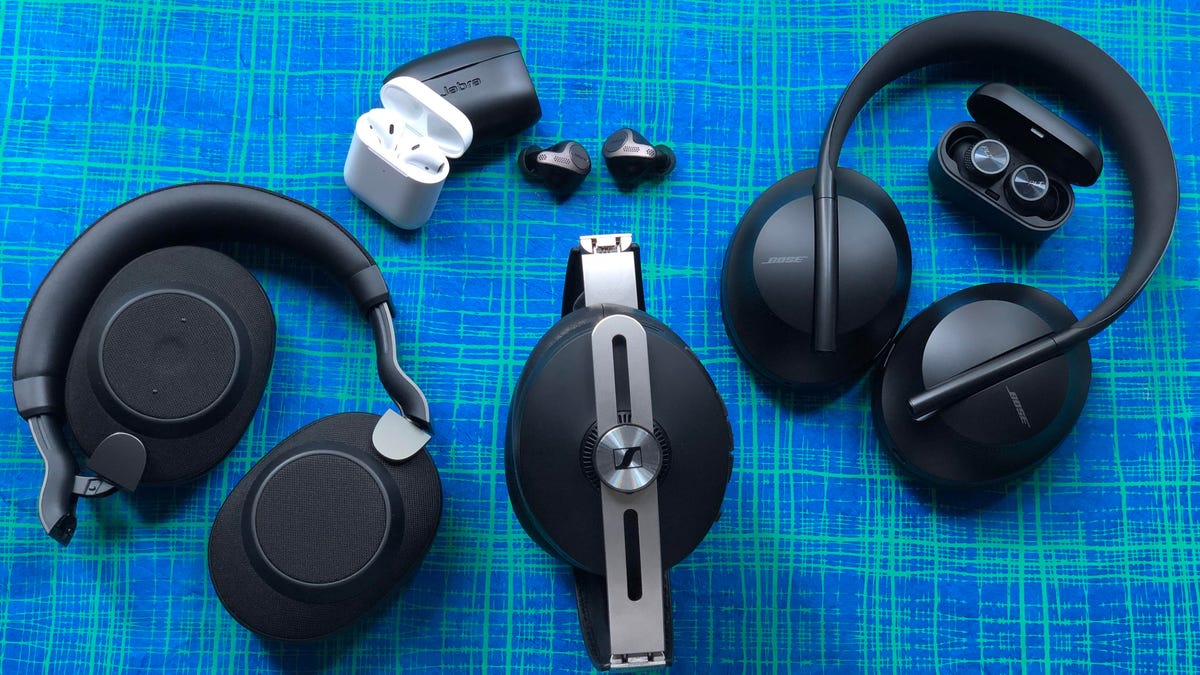5 ways to prevent hearing loss while using headphones
Headphones and earbuds can both cause hearing damage, but you have the power to reduce your risk of hearing loss.

You know that listening to loud music can damage your ears, but just how loud can you crank up the volume on your AirPods before increasing your risk of hearing loss?
A pair of headphones and a good playlist can serve as an ultimate focus tool to a simple pleasure, but it turns out that the very thing you turn to headphones for -- sound -- could be the thing that prevents you from listening in the future. Noise-induced hearing loss has always been a risk of certain professions, such as construction and military. Now, more and more young people are showing signs of noise-induced hearing loss, and nearly one in four US adults is affected.
Many people experience hearing loss caused by repeated exposure to loud noises. And now, aside from noisy occupations, concerts and sporting events, public health officials are concerned about one other big culprit: headphones. You can still listen to music through your beloved headphones, but take some precautions to preserve your hearing.
Read more: Noise app for Apple Watch hopes to prevent gradual hearing loss
If you're concerned about hearing loss, you can try out a few different simple steps to reduce your risk of damage from headphones.
1. Turn down the volume
Honestly, it's that easy: Just turn down the volume coming through your headphones or earbuds. Don't stop there, though. Make an effort to keep volumes from other sources low, too, such as when you watch TV at home.
Also, if you feel like you can't get the volume low enough, check to make sure your headphones don't have a separate volume control. For instance, I wear Aftershokz, and I can still hear the music when I turn my iPhone volume down.
2. Use noise-canceling headphones
If you're like many people, you wear headphones to drown out other sounds -- and keep turning the volume up as external sounds get louder. To combat that perpetual increase in volume, try wearing noise-canceling headphones. You can try passive noise-canceling headphones, which work mainly via a design that limits outside sounds, like high-density foam headphones that seal your ear from external sounds. You can also try active noise-canceling headphones, which work by constantly monitoring the sounds around you and generating soundwaves that directly cancel out the external noise.
Using headphones instead of ear buds can help you keep the volume lower, but still allow you to enjoy your music.
3. Wear actual headphones, not earbuds
Though the two terms are used interchangeably, headphones and earbuds aren't really the same thing. "Earbuds" refers to the small, usually silicone or hard plastic, devices that sit snugly in your ear. "Headphones," on the other hand, refers to the kind of devices that sit over your ears, usually covering the entire ear. The distance from sound to eardrum may be minimal between headphones and earbuds, but it's crucial in the long run.
4. Take listening breaks
If none of the above are an option for you, something as simple as taking breaks from your headphones can help prevent headphone-induced hearing loss. The longer you listen to loud music, the higher your chance of damaging your ears. Try taking a 5-minute break every 30 minutes or a 10-minute break every 60 minutes.
To be super safe, follow the 60/60 rule: Listen at 60% of your device's maximum volume for 60 minutes, and then take a break.
5. Set a volume limit.
Some devices allow you to set a custom volume limit in settings. On iPhone, go to Settings > Music > Volume limit to set a maximum. Check your device's settings or your user manual to find out if you can set a volume limit.
Still uncertain? According to the National Institutes of Health (NIH), the best rule of thumb is to "avoid noises that are too loud, too close, or last too long."
The information contained in this article is for educational and informational purposes only and is not intended as health or medical advice. Always consult a physician or other qualified health provider regarding any questions you may have about a medical condition or health objectives.

